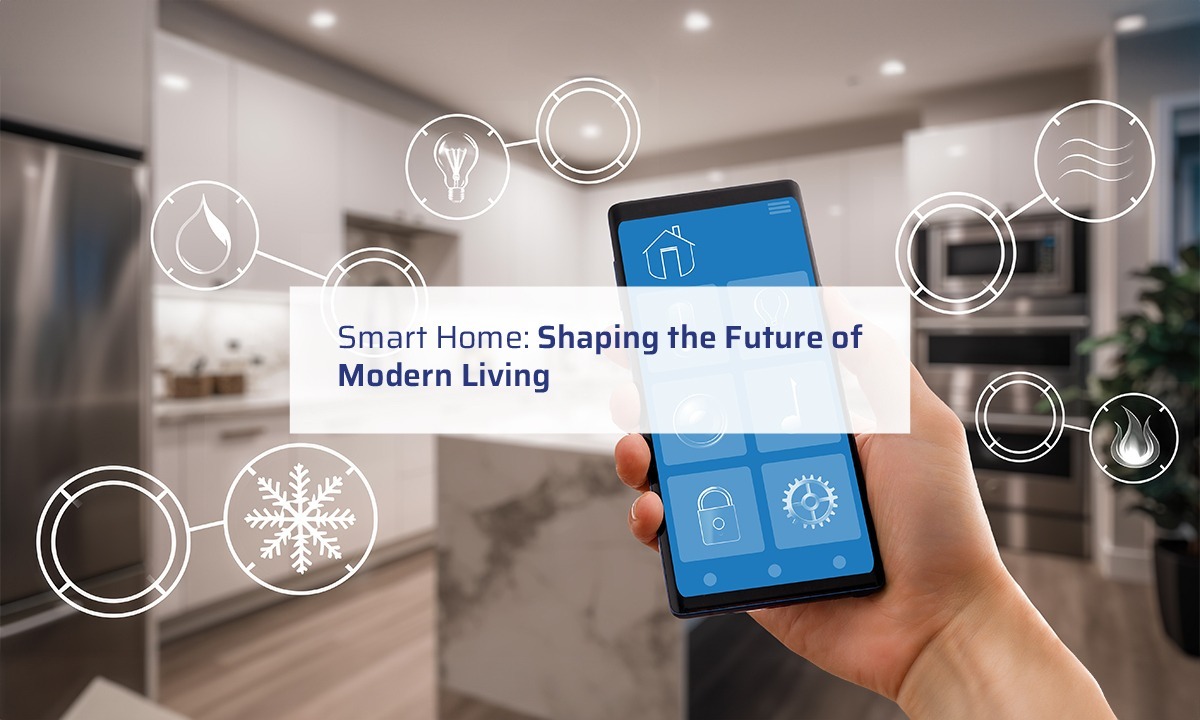How Smart Homes Are Shaping the Future of Living
Smart homes are rapidly transforming the way we live, with technology playing an increasingly central role in managing our day-to-day activities, enhancing convenience, improving energy efficiency, and even boosting security. The integration of Internet of Things (IoT) devices, voice assistants, and automation systems into home environments is reshaping the way we interact with our living spaces, creating homes that are smarter, more responsive, and more personalized.
One of the key aspects of smart homes is the automation of routine tasks. With devices like smart thermostats, lighting systems, and kitchen appliances, homeowners can control and customize their home environment at the touch of a button or through voice commands. For instance, a smart thermostat can learn a household’s schedule and adjust the temperature automatically, ensuring comfort while optimizing energy usage. Similarly, lighting systems can be programmed to turn on or off based on occupancy, or even change color and brightness to match the time of day, saving energy while enhancing ambiance.
Another significant benefit of smart homes is increased security. Devices such as smart doorbells, cameras, and locks allow homeowners to monitor their property remotely, providing peace of mind whether they are at home or away. These systems can send real-time alerts and video feeds to smartphones, giving users the ability to see who is at their door or track any unusual activity. Additionally, some smart home systems can integrate with motion sensors and security alarms, automatically notifying authorities in case of a break-in.
Smart homes also hold great potential for energy management and sustainability. Through intelligent systems that monitor energy usage, homeowners can make informed decisions to reduce waste, lower utility bills, and minimize their environmental impact. Solar panels can be integrated with home automation systems to maximize energy savings, while smart appliances can optimize their energy consumption based on time-of-use pricing or real-time energy availability. Over time, these technologies can contribute to a more sustainable and energy-efficient future, especially as more homes adopt renewable energy solutions.
Moreover, the evolution of voice-controlled assistants, like Amazon Alexa, Google Assistant, and Apple Siri, has made it easier than ever to manage smart home devices. These assistants allow users to control everything from lighting and temperature to entertainment systems, security devices, and even shopping lists, all without lifting a finger. The voice-activated control not only simplifies the management of a smart home but also promotes accessibility, enabling those with mobility impairments or other challenges to easily interact with their home environment.
Looking to the future, the integration of artificial intelligence (AI) and machine learning is expected to take smart homes to new heights. AI could enable homes to anticipate their occupants’ needs by learning their habits and preferences over time. For example, a smart home could adjust the heating and lighting based on past routines or suggest groceries based on a family’s consumption patterns. Additionally, AI-driven systems could improve the efficiency of appliances and home management, further reducing energy consumption and enhancing the quality of life.
Here’s some additional insight into how smart homes are further shaping the future of living:
The role of health and wellness in smart homes is also expanding. With the rise of wearable health devices and IoT-based monitoring tools, homes are becoming more attuned to their inhabitants’ well-being. Smart beds, for example, can monitor sleep quality and adjust firmness based on sleep patterns. Air quality sensors can detect pollutants or allergens, while smart water filtration systems ensure clean, healthy drinking water. Moreover, advanced home gym equipment can be connected to virtual trainers, allowing users to track their fitness goals and progress in real time, all while enjoying the convenience of working out at home.
Smart kitchens are also making cooking and meal preparation more intuitive. Appliances such as smart refrigerators can track food inventory, suggest recipes based on available ingredients, and even order groceries when supplies run low. Meanwhile, smart ovens and cooktops can adjust cooking times and temperatures automatically, ensuring meals are prepared with optimal results. These kitchen innovations not only make cooking more efficient but also help reduce food waste by reminding users when perishable items are about to expire.
In addition to convenience, smart homes offer significant improvements in accessibility for people with disabilities or aging adults. Voice-controlled systems, automated doors, and sensors that detect movement or changes in the environment can make homes safer and more navigable. For example, a smart home could automatically adjust lighting and temperature, open doors, or provide fall detection alerts for elderly residents. These technologies can improve the quality of life for people who need additional support and allow them to live more independently in their homes.
The increasing sophistication of data privacy and security features is also critical as smart homes become more interconnected. With the growing concern over data breaches and hacking, many smart home devices are now equipped with advanced encryption and security protocols to protect sensitive information. Multi-factor authentication and biometric verification are becoming common practices to ensure that only authorized users have access to critical systems, like door locks and security cameras. This is crucial as more personal and private data is stored in the cloud and accessed remotely via connected devices.
Lastly, the future of smart homes will likely involve greater interconnectivity and integration between devices, leading to the creation of unified ecosystems. Rather than having isolated smart devices that operate independently, homes will become more seamlessly integrated through platforms like Google Home, Apple HomeKit, or Amazon Alexa. These systems will not only allow better coordination between devices but also enable them to work together in more intuitive ways. For example, a smart thermostat might communicate with a smart washing machine, adjusting the home’s temperature when laundry is being done to save energy, or a smart security system could adjust lighting settings based on motion sensors around the home, making it appear occupied when residents are away.
The continuous development of 5G networks will further propel the capabilities of smart homes. With faster and more reliable internet speeds, connected devices will become even more responsive, enabling real-time adjustments and better integration between devices, making smart homes faster, more efficient, and more powerful.
In sum, smart homes are not just transforming how we live—they are also shaping the way we interact with our environment and each other. As technology continues to advance, these homes will become even more intuitive, personalized, and deeply integrated into our daily lives, offering new possibilities for convenience, efficiency, comfort, and well-being. Whether it’s through enhanced security, better energy management, or improved accessibility, smart homes are undoubtedly paving the way for a more connected, automated, and sustainable future.
Conclusion
In conclusion, smart homes are shaping the future of living by offering increased convenience, safety, energy efficiency, and customization. As technology continues to evolve, the possibilities for connected homes will only expand, creating more integrated, intuitive, and sustainable living environments. With smart homes becoming more affordable and accessible, the future of living is set to be more connected, automated, and personalized than ever before.




I value how you analyze complex topics and make them easy to understand.
This website is packed with valuable information, thanks for sharing.
7odl37
e77yej
9zlgg9
1mfr3g
nomuuc
ooefdj
zzeopx
vlouz1
hm1bv9
287fmz